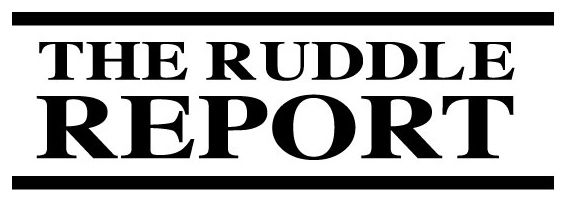
Block Management Armamentarium
Hello to each of you around the world. This is Cliff Ruddle, bringing you another blog answer to a bloggee’s question. How’s that? Bloggers and bloggees, joining together today to learn more about endodontics… Imagine that!
Listen, I’ve gotten a question from a colleague who wants to know a little bit about block management, but more slanted towards the armamentarium. So, let’s just go over a little bit, not how to manage blocks, but what would be some of the useful tools. Fortunately, this answer will be quite short.
I think it’s always important to take 3 well-angulated pre-operative views. I think the cone can be moved horizontally up to 30 degrees mesial, or alternatively could be moved up to 30 degrees distally. So, this will give you a better perspective of previous treatment or, if the tooth has never been endodontically treated, it will give you a better diagnostic perspective moving forward.
The colleague wanted to know, would well-angulated films reveal a block? It is my experience that this would not be the case. In other words, you’re not going to see, on a radiograph that gives you resolution to about 50 microns… you’re not going to see a blocked canal. Now, where you might see a blocked canal is you might see that the canal that has been obturated is not centered in the root and it can look like a ledged canal. Oftentimes, the ledge, the precursor to the ledge, was an obstruction and as the bigger and stiffer instruments worked into the apical one-third, they did not follow the true physiologic pathway, but rather they began to deviate from this pathway into a new iatrogenic pathway.
So, sometimes we might see evidence of a blocked canal if we see a ledge, but now you have a double complication… a block and a ledge. But, just so everyone’s clear, most ledged canals, or many ledged canals, are blocked canals.
All right. So, radiographs could be useful in the instance of evaluating a tooth that was previously treated endodontically. If it’s a Ruddle block, in other words, I’m working in a root, I’m the first one in, and I have a block that has happened, I’m not going to see this in a film. So, I just want to make that comment because he wanted to know, could we use a radiopaque solution such as hypaque to flush into the tooth and would that help us understand if we were dealing with a block? Yes, hypaque has been used for many, many years. Machtou, from Paris 7, was the first to bring it into dentistry in a serious way and has done quite a bit of research through his residents at Paris 7, since about 1980.
So, hypaque could be flushed into a canal and if it didn’t go to length, you could fantasize that the canal was blocked, but you don’t know if maybe there’s just too small of a working width, at this moment, for the irrigant to actually introduce itself into this pathway and reach length. So, just because an irrigant doesn’t go to length early, it doesn’t mean that there’s a serious block at all. It just may mean that there isn’t sufficient width. The canal has not been enlarged enough to receive the irrigant to be visualized, radiopaque, radiographically. So, I don’t think that our radiopaque solutions are really that useful for blocked diagnostics.
Another, though, bread-and-butter tools are your 06, 08 and 10 hand files. These are 2% tapered, they’re fixed, and they’re stainless steel. Fixed means they’re fixed tapered. I don’t want double tapers; I don’t want the C-files in here. These are big instruments that tend to encourage blocks, in this blogger’s opinion.
So, these small-sized files are useful to pick through a cocktail that oftentimes is dentin. Sometimes it’s all collagenous tissue and oftentimes it’s a mixture. It’s a cocktail of, perhaps, dentin, collagenous tissue, shards of pulp tissue and could even hold bacteria, when present, and the related breakdown products. So, small-sized hand files.
However, the hero instrument to initiate block management IS the 10 file because it gives you more rigidity. We don’t want to use the 06s and 08s until we’ve engaged the tip of the 10. Only when we have handle flutter and we have engaged apically can we go to a smaller file to see if this would help us reach length.
So, I’ve identified radiographs. I’ve kind of been a little bit negative on radiopaque solutions. I think the small-sized hand files are the instruments of choice. Then, finally, we need to think about the chemicals. Again, I can categorize all the three commonly used ones into just viscous chelators. Viscous means they have the viscosity, more like toothpaste, but the examples would be RC Prep, ProLube and Glide. Pretty much small-sized hand files and any one of these three viscous chelators… You are ready chairside to negotiate blocked canals.
One chemical I didn’t mention is a chemical called Chemet. It’s C-H-E-M-E-T, and you can get it from Succimer; that is the company… Succimer, S-U-C-C-I-M-E-R. And, what it is… It’s a dimercaptosuccinic acid. That’s what it is. It’s a dimercaptosuccinic acid. And this is probably more powerful than the three viscous chelators that I just mentioned, but this can also corrode dentin and the tubules quite rapidly. So, this is not allowed to sit in a root for more than a few moments. That means less than a minute. And, you are working with this chemical inside the canal and you can use your instruments as I previously mentioned in other blogs, such as “Block Management”. Chemet has been used successfully by some very respected clinicians. I frankly have not used it, and have continued to not use it because I haven’t ever felt I really needed it. But, people that I really have enormous respect for… one example would be Dr. John West from Tacoma, Washington… He likes Chemet and introduces this chemical in his lectures as a method to negotiate blocked canals.
So, we have radiographs, small-sized hand files, viscous chelators, and perhaps Chemet. The thing I didn’t mention in your armamentarium that is most important to pack in your “bag of tricks” is… Time. Time is a commodity, but it will require chairtime to negotiate the more serious blocks. Obviously there are nuisance blocks, but the serious blocks are going to take commitment.
I, in about 38 years of clinical practice, have rarely not been able to negotiate blocked canals. Remember, even back in 1990, I’ve said in blogs and lectures and articles, that over 90% of my practice, even by 1990, was dedicated to exclusively retreatment. This means reworking other people’s root canals. I can tell you, when you look at a pre-operative film on a previously treated tooth, if the obturation material is short of length, you should anticipate the canal was first blocked and that’s maybe what prevented the obturation materials from reaching the full length.
Good luck in block management and be sure to have some chairtime and a little bit of, you know, the “inner game”. The inner game is that conversation that happens between your ears. If you think you can, you can… And if you think you can’t, you’re right.



